
RAIC announces the 2016 Governor General's Medalists
By Justine Testado|
Friday, May 20, 2016
Related
Canadian architecture firms who recently completed a project have a chance to compete in the Royal Architectural Institute of Canada's and Canada Council for the Arts' notable Governor General's Medals in Architecture. The biennial competition recognizes outstanding projects that contribute to architectural practice, and best exemplify themes of connection, revitalization and experimentation through their designs. Featuring projects of various typologies, the awards give a glimpse of the ripe talent that continues to emerge from the country's contemporary architecture scene.
RAIC and the Canada Council for the Arts revealed the 12 winning projects, which include stunning libraries, healthcare facilities, and residential homes. Recipients will be presented with their awards during a ceremony at Rideau Hall on September 20.
“Bringing people together in new ways, valuing what we have, and designing innovative programs are currently what our architects do best,” cited jury member Annmarie Adams. “Each of the winning projects is a catalyst for change beyond its own site lines.”
Keep scrolling down to see the projects.
(cover image) Head Office of Caisse Desjardins de Lévis (Lévis, QC): Consortium ABCP architecture and Anne Carrier architecture
Jury comment: “This exceptional office building, developed within the discipline of commercial structures designed for financial institutions, breaks new ground in its organization and detailing. Most of the space is designed for large open office layouts, but the designers have clustered the circulation and enclosed spaces along the north face of the building to create a zone of energy and contact. Triple glazing provides acoustic privacy for the meeting spaces while creating a lively and special identity for the facade. The jury applauds the clarity and refinement of this unique building, and the clients who supported it.”

Wong Dai Sin Temple (Markham, ON): Shim-Sutcliffe Architects
“The jury appreciates this project for its conceptual clarity. It is a pleasure to see such a unique building that celebrates structural form and materials. The relationship between the form and function of the Temple demonstrates a strong and considered composition. For example, the Temple gives the appearance of being both heavy and light; the major volume hovers above the ground, providing a protected space below for collective activities. Similarly, the striking façade modulates natural light while controlling views of the surroundings. This is a beautifully crafted and designed building that the jury feels raises the bar for architects working in the domain of new spiritual buildings.”
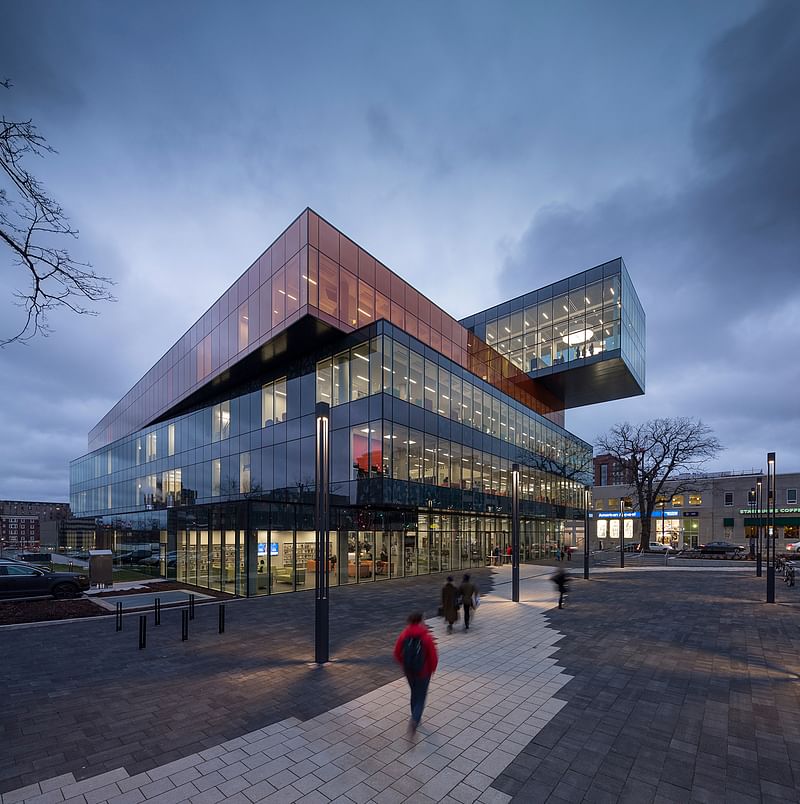
Halifax Central Library (Halifax, NS): Fowler Bauld & Mitchell
“This outstanding new civic building is a community gathering place that responds to the diversity of its users, accommodating many more activities than the traditional library. This 21st century facility is topped by the Halifax Living Room: an inviting, light, and playful public space with views across Halifax as far as the harbour. Other spaces provide for learning, reading, exercising, studying, hanging out, and playing. The reception area’s generous atrium with its beautiful stairway is the hub connecting the functions and users. The jury commends the process of early user engagement that led to the design, and the public’s embrace of the building is a testament to its value.”
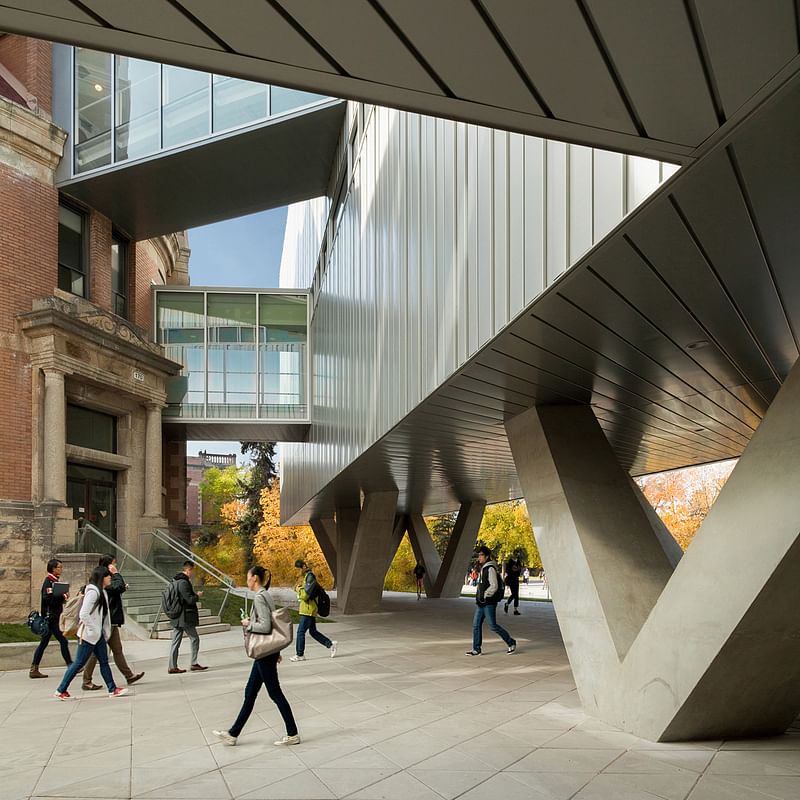
University of Manitoba ARTlab (Winnipeg, MB): Patkau Architects / LM Architectural Group
“The ARTlab brings art and music out of Taché Hall—a former 1911 student residence—and in to the public realm of Duckworth Quadrangle, the University of Manitoba’s the main outdoor space. The juxtaposition of new and old adds up to more than the sum of its parts. With the new space, the architects give the older building a new face on campus. Circulation is a key theme in the project, with a dramatic atrium connecting levels and glass bridges colliding with the historic brick walls. The exterior spaces beneath the new addition provide for a protected entry sequence in Winnipeg’s harsh winters, while the interior provides stunning views back on to the campus, making for an inspiring environment to create works of art. There is a dynamic tension in the plan, creating simple yet idiosyncratic spaces inside and out.”
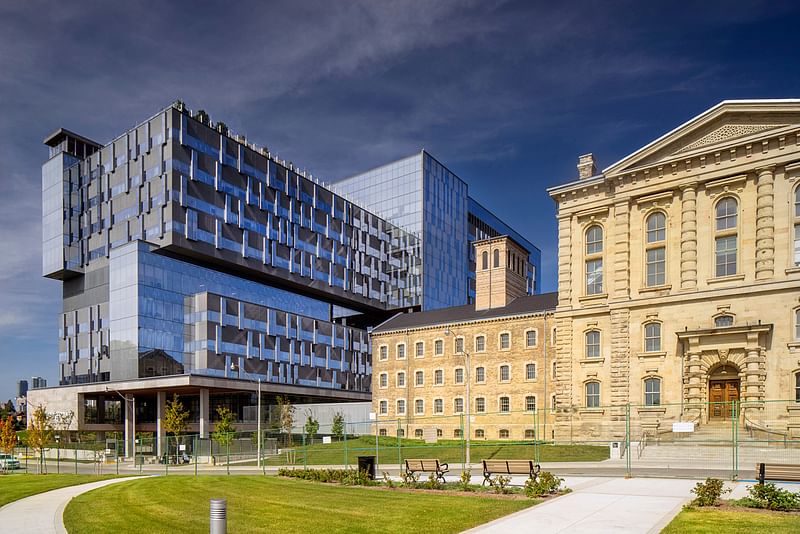
Bridgepoint Active Healthcare (Toronto, ON): Stantec Architecture / KPMB Architects (Planning, Design and Compliance Architects) and HDR Architecture / Diamond Schmitt Architects (Design, Build, Finance and Maintain Architects)
“This innovative healthcare project heals the city by revitalizing an historic jail site and linking patient spaces with nature and the city. This project is strong on connections: between present and past, hospital and city, patients and healthcare professionals. Unlike most health care facilities, the interior and exterior spaces join to promote health, with areas for outdoor meeting, retreating, and conversation. Windows, fixtures, and spaces are scaled to the humans who occupy the facility. The former jail at the centre of the site opens onto public gathering space; connecting the grounds with the wider world. This project suggests many ways to address the often dehumanizing aspects of the traditional hospital experience, which the jury applauds.”

Amphithéâtre Cogeco (Trois-Rivières, QC) by Paul Laurendeau architecte / Beauchesne Architecture Design
“The amphitheater has become an icon in the transformation of the riverfront precinct in Trois-Rivières, providing a new identity for the city. Using the simplest of geometry and the lightest of touch, the architects have created a memorable place for performances. The jury admires the precision of its distinct floating roof. Night lighting and the use of bright colour make the building a beacon for spectacles and performances at the water’s edge.”

RELATED NEWS MJMA awarded as the 2016 RAIC Architectural Firm
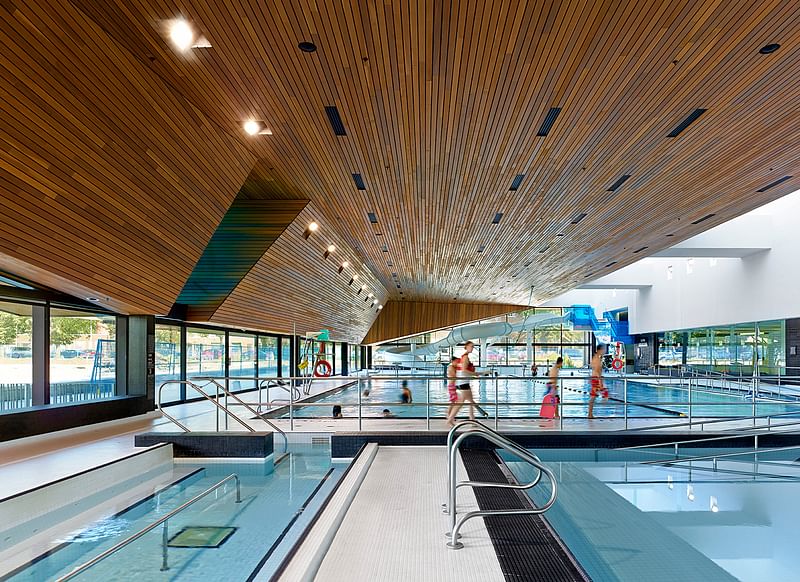
Regent Park Aquatic Centre (Toronto, ON): MacLennan Jaunkalns Miller Architects
“While the jury commends the many fine aquatic and recreational centres that it reviewed in other Canadian cities, Regent Park Aquatic Centre stands out. This facility is sensitively connected to its surroundings, and replaces an outdoor pool that had been the neighborhood centre for many years. Open and transparent, it invites passersby and those using the adjacent park into its grand space that houses a sparkling pool and recreational facilities. It is a pavilion in the best sense, elevating the activities and making them accessible. The green roof is the building’s fifth façade, completing Regent Park’s green environment.”
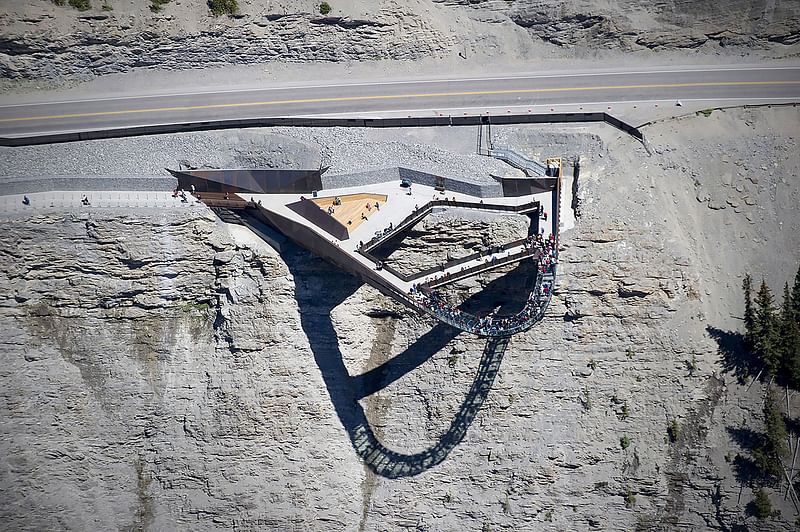
Glacier Skywalk (Jasper, AB): Sturgess Architecture
“This extraordinary landscape intervention challenges visitors to experience the scale of the Columbia Icefields on foot, rather than from a car. Tough materials such as Corten steel and the jagged, fractal forms along the pathway emulate the thrust-fault movement that has shaped glaciers. Like many outstanding works of architecture, this projects offers users a unique opportunity – a viewing platform to see the world in a whole new way. The jury notes that the skywalk makes you feel safe and frightened and the same time: that’s its magic.”
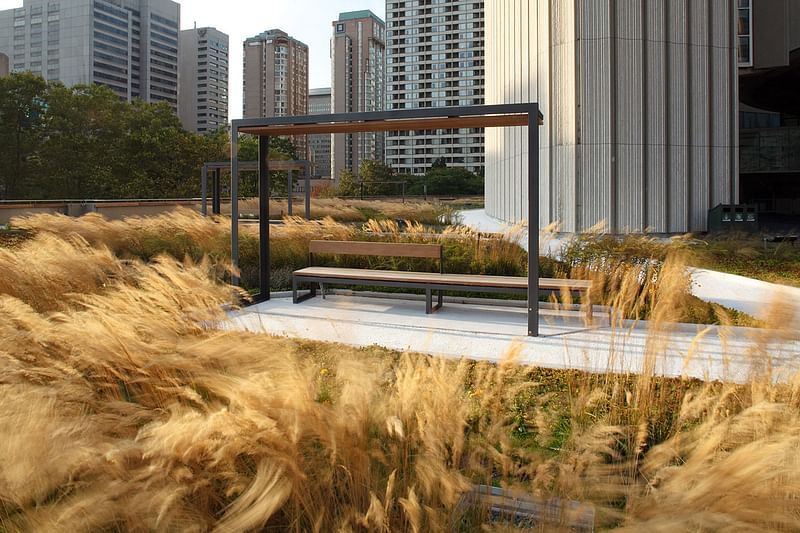
Nathan Phillips Square Revitalization (Toronto, ON): PLANT Architect in joint venture with Perkins + Will Canada, formerly Shore Tilbe Irwin & Partners
“Nathan Phillips Square has long been the symbolic center of the city, but was too often left empty or littered with temporary structures. The courageous renovation and reprogramming of the square now makes it one of most sought after public spaces in Toronto. Carefully balancing Viljo Revell’s original design with new additions to support active uses in all seasons, it has become a hyper-democratic place. With purposefully designed spaces allowing people to unwind or be active, engage in collective experiences or seek solitude, the square accommodates many different users and uses. What makes this project so great is that it preserves the essentials of this historic square while adapting it for future generations. The jury commends the architects, and city of Toronto for realizing this project, which has created one of the most outstanding public spaces in Canada.”

BC Passive House Factory (Pemberton, BC): Hemsworth Architecture
“The factory is both a demonstration of the possibilities of wood for ordinary industrial structures, and a home for an innovative industry producing panels for building. The architect has considered every detail, from the wood structure and panelized roof, to the sloped larch and fir screens, to the beautifully finished interiors. The jury was impressed by the speed in which the building’s super structure was constructed: a mere eight days. BC Passive House Factory proves that modest structures can be extraordinary examples of architecture.”
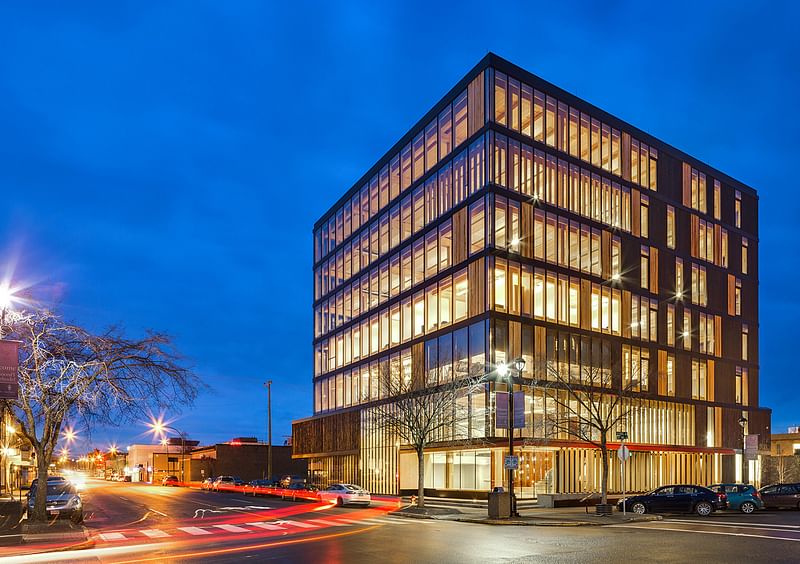
Wood Innovation and Design Centre (Prince George, BC): MGA | Michael Green Architecture
“This Centre celebrates wood as a handsome and sustainable material, and demonstrates its viability for tall buildings. It is more than just a technological experiment; the project combines intelligence, beauty, and innovation in its approach to features such as the engineered wood curtain wall system, interior finishes, and modulation of sunlight. The jury applauds this exceptional structure that exhibits one of the unique contributions made to design and construction research in Canada and beyond.”
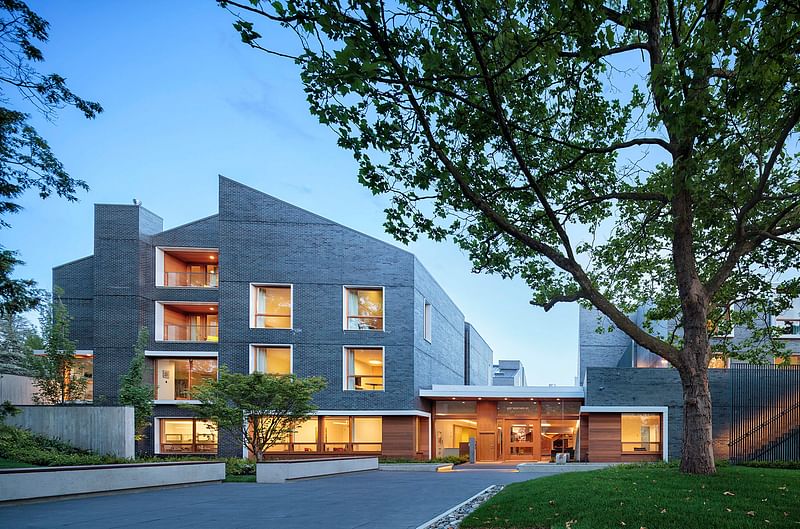
Ronald McDonald House BC & Yukon (Vancouver, BC): MGA | Michael Green Architecture – project begun at mcfarlane | green | biggar architecture + design
“This Ronald McDonald House plays an important role in the daily lives of families with children receiving cancer treatment. Although the building accommodates up to 73 families, it feels more like a large home than a regular hospital hotel. The architecture has warmth, using familiar domestic materials and a human scale. The structure is broken into four modules, each with connections to create common areas where people can socialize, while providing private spaces for families to be alone during trying times. It is a comforting environment for families who are away from their homes for extensive periods, and a model for other such facilities.”

Share
0 Comments
Comment as :